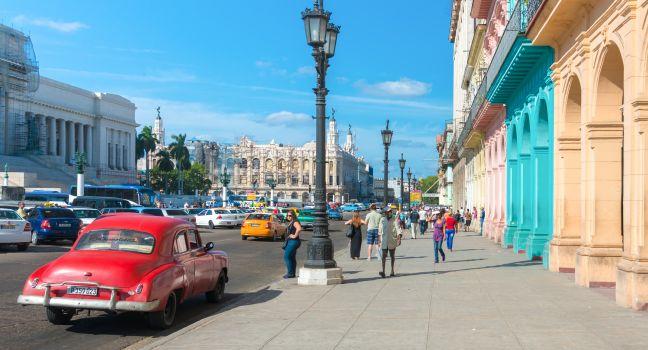La Habana Vieja

La Habana Vieja is a thick concentration of colonial architecture and humanity—a vibrant wedge of restoration work and tumultuous street life all set to music. Dubbed "Key to the New World" for its strategic position at the confluence of the Atlantic, the Caribbean, and the Gulf of Mexico, Havana was the staging point for the riches shipped back to Spain, and the tremendous wealth of this era is reflected in the plazas and mansions sprinkled throughout the old city. This opulent colonial patrimony also bears witness to the social inequities that led to the Revolution, which, in turn, resulted in the unusual conditions that make present-day Old Havana a unique blend of colonial splendor and contemporary squalor.
Development of Havana began on the eastern edge nearest the harbor and moved west. Unlike the standard models for Spain's imperial capitals, the city has no main square. Plaza de Armas, as the seat of colonial rule, comes closest to this role historically, though its position on the edge of the bay (and the city) deprives the square of the required centrality. Plaza Vieja (originally called Plaza Nueva) was created as a space for markets and festivities instead of for the military and the government. Plaza de San Francisco was Havana's third square, followed by the Plaza de la Catedral, originally known as La Ciénaga (the swamp) for its marshy terrain. La Habana Vieja's fifth square was the Plaza del Santo Cristo.
More than half surrounded by the Bahía de la Habana (Havana Bay), Calle Águila, the only street that begins and ends at the sea (running from the Ensenada de Atares to the Malecón), is officially the western limit of La Habana Vieja, although the true border is Calle de Bélgica (more often known by its old name as Egido), which becomes Monserrate at its center and Avenida de las Misiones at its northern extreme.
La Habana Vieja is composed of a dozen north–south streets intersected by 20 east–west arteries, forming more than 100 surprisingly symmetrical (for 16th-century urban planning) blocks. Innumerable mansions and palaces, nearly two-dozen cultural centers and museums, six churches, and five convents are crowded into this 1½-square-miles municipality. Calle Brasil (Teniente Rey) roughly divides La Habana Vieja into a southern sector including Plaza Vieja and Plaza del Santo Cristo, and a northern sector that includes Plaza de Armas, Plaza de San Francisco, and Plaza de la Catedral.
Recommended Fodor's Video
Elsewhere in La Habana Vieja
Vedado >
Restaurants (5), Things to do (20), Hotels (8)
Centro Habana >
Restaurants (5), Things to do (16), Hotels (6)
Miramar >
Restaurants (4), Things to do (12), Hotels (4)
Habana del Este >
Restaurants (3), Things to do (12), Hotels (2)




